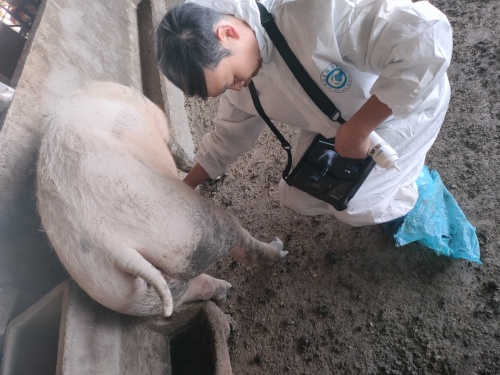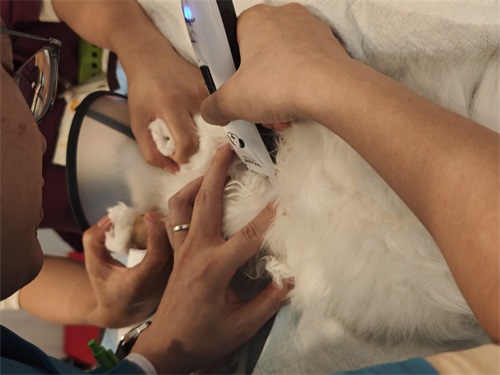Hey, let me tell you about my experience using abdominal ultrasound on animals, how it’s super useful, and which species respond best to it. I want to share it like I’d explain to a colleague over coffee, no stiff lecture tone.

Why abdominal ultrasound matters in vet practice
First off, abdominal ultrasound is a real game-changer for vets. You point a probe at the animal’s belly, you see organs in real time, check them non-invasively. Nice if you’d rather avoid surgeries or x-rays that stress the patient.
Animals that mesh well with abdominal ultrasound
Most domestic mammals—they tolerate it well. Let’s break it down:
| Species | Typical Use Cases | Notes on suitability |
|---|---|---|
| Dogs and cats | Kidney, liver, bladder, intestines | Usually cooperative with light sedation |
| Cattle | Rumen, uterus (pregnancy), liver, kidneys | Thick wall, low-frequency probe helps penetrate |
| Sheep and goats | Pregnancy, gut, liver | Works well with small probes |
| Pigs | Uterus, bladder, abdominal masses | Need firm contact, sometimes sedation |
| Horses | Limited use—foals mostly | Adults tough to scan, gas and girth interfere |
| Exotic mammals (rabbits, ferrets) | Pregnancy, gut, kidney | Small size → requires high-frequency probes |
Dogs and cats – quick scan buddies
Spend a day in small-animal practice, you’ll reach for ultrasound often. A friendly sound of “who wants a belly scan?” and the pet is already curious. Light sedation or gentle restraint works. You watch the liver’s lobes move, kidney cortex and medulla look distinct, bladder is a balloon on screen. Everything smooth.
Best frequency range: 7.5–12 MHz gives good resolution. Low stress, high payoff.

Cattle – bulky but rewarding
Beef or dairy herds rely on ultrasound a lot, especially for pregnancy checks. Rumen’s massive sac, but with a low-frequency (around 3.5–5 MHz) probe and proper gel, you penetrate the wall easily. Liver and kidneys lie beyond, still visible. That uterus? You can pick up fetuses early.
Handling wise: restraint chute or halter keep things safe. Cattle don’t mind if they stand quietly. Results help decide which cow to breed next, which to cull, or when to treat metabolic issues.
Sheep, goats – small, but clear visuals
Compact bodies make organs easier to access. For pregnancy diagnosis, you gently part fleece/wool, apply gel, handheld probe. You see heartbeat, fetal position. Liver fine-details show nicely with 7.5–10 MHz. Great tool in herd health, neonatal care.
Pigs – sneaky but we’ve got tricks
Pigs don’t look cuddly, but ultrasound helps detect bladder stones, tumors, pregnancies. You set them in a small crate or just hold firmly. Gel and sometimes clip some hair. Rigid probe contact key. Best with mid-frequency 5–7.5 MHz.
Stomach gas can block view, you angle slightly sideways. With patience, images come through.
Horses – only for the young or special cases
Adult equine patients? Big bellies and lots of gas limit view. If you’re scouting foal health or checking colic issues, ultrasound helps. Keep them calm, use high-frequency pads, maybe scan from the flank. Images not as sharp, but still useful.
Foals fair better—they pick up fluid in abdomen, ulcers, organs on screen.

Exotic small mammals – detail galore
Think rabbits, ferrets, guinea pigs. Tiny bellies, compact organs. Probe rests on shaved spots, gel, high-frequency 12–15 MHz. You see intestines flutter, kidneys bright cortex, fetal skeletons flicker on screen. Vital in exotics clinics.
Common factors across species
Coat or hair: clip short area to ensure gel and probe make contact.
Sedation or gentle handling: cats may flick tail, pigs may squeal—some calm helps.
Frequency matters: higher frequency → better detail, but shallower depth. Lower frequency penetrates deeper but less sharp.
Gas interference: gas blocks ultrasound. You angle around it or wait for gas to move.
Quick comparison table
| Species | Ease of Scanning | Main Organs Scanned | Preferred Probe Frequency |
|---|---|---|---|
| Dog/Cat | High | Liver, kidney, bladder, spleen | 7.5–12 MHz |
| Cattle | Moderate (with restraint) | Uterus, liver, kidney, rumen | 3.5–5 MHz |
| Sheep/Goat | High | Uterus, liver, kidney | 7.5–10 MHz |
| Pig | Moderate | Bladder, uterus, abdominal masses | 5–7.5 MHz |
| Horse (Foal) | Low (adult), Moderate (foal) | Foal abdomen, colic regions | 5–10 MHz |
| Exotics (Rabbit, Ferret) | High (small size) | Intestines, kidneys, pregnancy | 12–15 MHz |
Real-world chat-style insight
When I switched from chasing radiographs to ultrasound, it felt like stepping into a video game. The pet stays calm, you see organs wiggle, you talk to the animal: “Hey buddy, hold still; bladder coming into view…” It’s that casual interaction that makes the technique both enjoyable and efficient.
Cattle feel like patient giants. You flick gel, they blink, you say, “Here’s your baby,” when the fetus shows. Farmers nod, say “cool,” then get back to feeding. That vibe matters.
Wrap-up and take-home
Abdominal ultrasound fits nicely across species. Dogs, cats, sheep, goats? Totally work. Cattle and pigs? Need prep and care but worth it. Horses only in limited situations. Tiny mammals? Offer surprising clarity.
Focus on the animal’s size, body wall, gas content, behavior. Use the right frequency probe. Keep scanning friendly and stress-free.
This tool helps vets monitor health, diagnose problems, support pregnancy, evaluate mass, assess organs. A real lifesaver for animals and much less invasive than surgery or x-ray.
tags:


